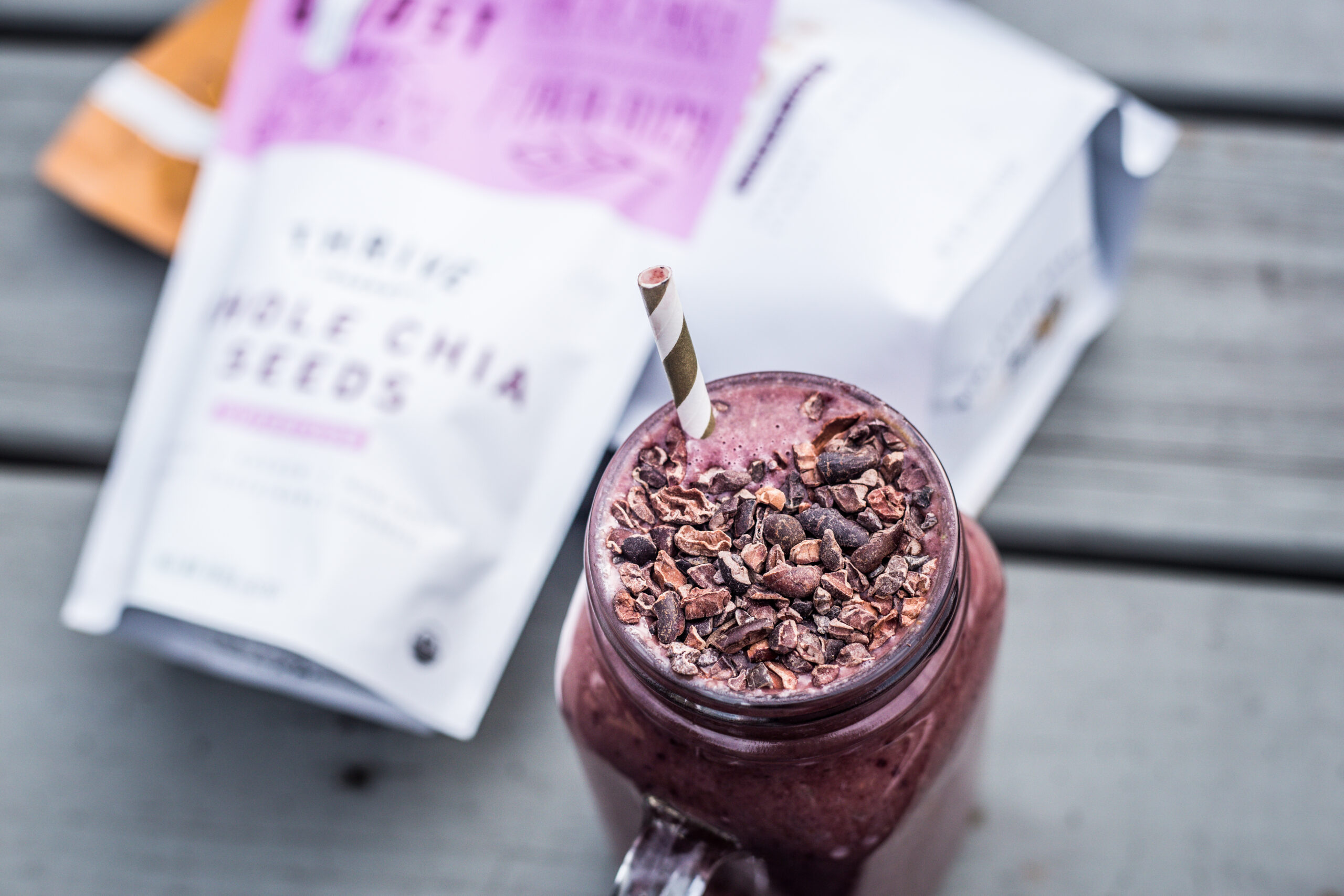A smoothie can serve as a cool, creamy, delicious meal-in-a-glass. But when you whip up your favorite smoothie, is it going to nourish you or merely satisfy your taste buds? And what will it do to that number on the scale? Here are six ingredients our dietitians believe will help you create the most nutritious, filling smoothies ever:
1. Dark, leafy greens
Spinach and kale are great staples for smoothies. But don’t be afraid to branch out and try beet roots, celery (with leaves) or other dark, leafy greens.
Greens are low in sugars and calories, and provide more iron and protein than fruit. They’re also bursting with fiber, folate, and phytonutrients like carotenoids, saponins and flavonoids.
“A smoothie that is all fruit is an unbalanced mini-meal,” says Anna Taylor, MS, RD, LD. “Grab a big handful of greens, rinse, and add to your smoothie to ensure you’re not missing out on key nutrients.”
All veggies help support a healthy weight, keep bowel movements regular, fight inflammation and decrease the risk of chronic disease. But research shows the vast majority of Americans struggle to eat the recommended three to five servings a day.
“If you have a difficult time eating vegetables, smoothies are a great way to increase your intake. Add as many dark, leafy greens as you like!” says April Verdi, RD, LD.
2. Cruciferous veggies
Shredded cabbage, bok choy (and leafy green kale, as well) are part of the special cruciferous family of vegetables.
“Cruciferous vegetables are my favorite ingredients to add to a smoothie. These nutrient-rich gems contain glucosinolates, an anti-inflammatory phytonutrient,” says Brigid Titgemeier, MS, RDN, LD.
Researchers are exploring cruciferous vegetables because studies have linked glucosinolates to a lower risk of certain cancers. And one study linked broccoli intake to increased survival in bladder cancer.
Whatever vegetable you choose, “smoothies are an incredibly easy vehicle for increasing your overall consumption, because you can’t taste the veggies!” she says.
3. Nuts, nut butters and seeds
Veggies are vital in a smoothie, but protein will stabilize your blood sugars and keep you feeling full.
Peanut butter, other nut butters, nuts and seeds provide protein — and they also provide heart-healthy fat.
“Most smoothies provide carbohydrate and protein but lack fat,” notes Kate Patton, MEd, RD, CSSD, LD. “The extra bit of fat in nuts, nut butters and seeds helps to slow your digestion.”
Choose natural peanut or almond butter (all peanuts or almonds, no fillers), or add walnut halves to boost your omega-3 intake.
Ground flaxseed is another great option. “It’s a source of omega-3 fat and provides extra protein and fiber,” says Ms. Patton. Two tablespoons contain 60 calories, 4.5 grams of unsaturated fat, 3 grams of protein and 4 grams of fiber.
“Because extra fiber also helps with bowel regularity, you may want to start with a small serving of flaxseed. Then increase, as desired, up to 2 tablespoons per day,” she notes.
Because nuts, seeds and nut butters are high in calories, “be mindful of portion sizes,” cautions Ms. Verdi. “Add no more than half an ounce of nuts or seeds, or 1 tablespoon of nut butter, per serving.” For example, eight walnut halves equal half an ounce.
4. Greek yogurt and milk/ milk alternatives
Dairy products are another source of protein, which can help make your smoothie a true meal replacement that keeps you satisfied.
“Plain Greek yogurt and tofu are nice alternatives to protein powders, which often come with added flavors and sugars that you may not want or need,” says Dawn Noe, RD, LD, CDE.
Ms. Verdi recommends nonfat, plain Greek Yogurt. If you want to add liquid to your smoothie, she suggests using unflavored skim or 1 percent cow’s milk, or unflavored almond or soy milk.
5. Berries
Love fruit in your smoothie? Then berries are the way to go.
“Raspberries, blueberries, strawberries and other berries add a sweet and tart flavor, and their fiber helps you stay full,” says Ms. Noe.
“Berries also contain antioxidants, which research suggests may have cancer-fighting properties. And because they’re low on the glycemic index, berries won’t spike your blood sugars as quickly as other fruits do.”
Try tossing a mixture of berries into a smoothie. It’s easy to find frozen bags of mixed berries at the grocery store. “Just be sure to buy the plain fruit mixture – without added sugar,” she adds.
Frozen fruit is a nutritious replacement for ice in your smoothies, too.
6. Spirulina
This sea vegetable, in dried powder form, is a nutrient powerhouse — but it’s not for everyone.
“Spirulina offers a ton of nutrient density without packing in the calories and sugar,” says Kristin Kirkpatrick, MS, RD, LD. “I recommend adding 1 to 2 tablespoons to a smoothie.”
Two tablespoons contain just 40 calories, 3.4 grams of carbohydrate and 0.5 grams of fiber, but provides 8 grams of protein because it’s so rich in amino acids.
But here are some caveats:
- Spirulina may interact with certain medications, especially immunosuppressant drugs. If you have rheumatoid arthritis, multiple sclerosis, lupus or another autoimmune disease, spirulina is not for you.
- Anyone with the rare disorder phenylketonuria (PKU) should also avoid spirulina because one of the many amino acids it contains is phenylalanine.
- Finally, if you’re pregnant or breastfeeding, talk to your doctor before trying this potent sea vegetable.
Now that you’re armed with a list of the best ingredients to add to a smoothie, you should be able to create nutrient-packed, quick meals that also make your taste buds happy.

